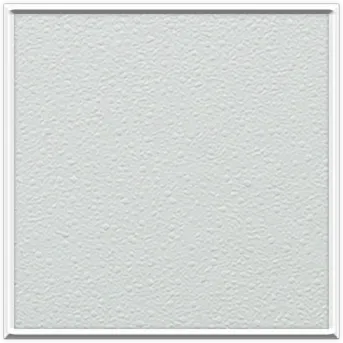Dec . 12, 2024 10:56 Back to list
insulated ceiling hatch
Understanding Insulated Ceiling Hatches A Comprehensive Guide
In today’s modern building designs, energy efficiency has become a top priority, resulting in innovative solutions to minimize heat loss or gain. One such solution is the insulated ceiling hatch. While often overlooked, these hatches play a crucial role in maintaining temperature control in residential and commercial spaces alike. This article delves into what insulated ceiling hatches are, their significance, and their application in various settings.
What is an Insulated Ceiling Hatch?
An insulated ceiling hatch is an access point in the ceiling that provides a passage to attic spaces, rooftops, or utility areas. Unlike standard hatches, insulated ceiling hatches are designed with thermal insulation materials that significantly reduce energy transfer. This insulation helps to keep the space below cooler in the summer and warmer in the winter, thereby enhancing energy efficiency.
Most insulated ceiling hatches are constructed from materials such as fiberglass or polyisocyanurate foam, which both offer excellent thermal performance. These hatches are typically equipped with airtight seals to further minimize air leakage, which can lead to increased energy costs.
Benefits of Insulated Ceiling Hatches
1. Energy Efficiency The primary advantage of installing insulated ceiling hatches is their contribution to energy efficiency. By minimizing heat loss, they help maintain a consistent indoor temperature and reduce the workload on heating and cooling systems. This can lead to significant savings on utility bills.
2. Comfort A well-insulated ceiling hatch aids in maintaining an even temperature throughout a space. This results in enhanced comfort for occupants, as it prevents the drafty conditions often associated with poorly insulated areas.
3. Moisture Control Insulated ceiling hatches can also help regulate humidity levels within a space. By preventing the transfer of warm, moist air to cooler surfaces, these hatches can reduce the likelihood of condensation and mold growth in attics and other enclosed spaces.
4. Ease of Access Apart from their thermal benefits, insulated ceiling hatches facilitate easy access to attic spaces. This is particularly useful for utility inspection and maintenance, allowing for maintenance work without compromising the insulation of the building.
5. Durability Most insulated ceiling hatches are designed for longevity. They are often constructed to withstand harsh environmental conditions, ensuring that they will remain effective over time without the need for frequent replacements.
Applications of Insulated Ceiling Hatches
insulated ceiling hatch

Insulated ceiling hatches are versatile and can be used in various environments
- Residential Buildings Homeowners can benefit from these hatches by using them for attic access, ensuring that energy-efficient ventilation is maintained while having the convenience of easy access.
- Commercial Spaces In commercial buildings, the proper regulation of temperature can have a significant impact on the overall operational costs. Insulated ceiling hatches are commonly used in offices, warehouses, and retail spaces where energy efficiency is critical.
- Industrial Settings In industries that require strict temperature regulation for equipment or materials, insulated ceiling hatches provide crucial access while minimizing heat transfer.
Installation Considerations
When considering the installation of an insulated ceiling hatch, several factors should be taken into account
- Location The location of the hatch should be strategically planned to allow easy access while not disrupting the flow of the building’s design.
- Size and Type Choose a hatch size that fits your accessibility needs. Consider whether a manual or automatic operation is more suitable for your application.
- Building Codes Be sure to comply with local building codes and regulations regarding the installation of ceiling hatches.
Conclusion
Insulated ceiling hatches are an essential component in optimizing energy efficiency, comfort, and access within buildings. By understanding their benefits and applications, homeowners and building managers can make informed decisions that enhance the performance of their spaces. Investing in quality insulated ceiling hatches is not just about convenience—it's a step toward sustainability and reduced energy costs, making them a worthwhile consideration for any building project. Whether for a new construction or retrofitting an existing structure, insulated ceiling hatches are a smart choice for a better-built environment.
-
Durable Ceiling T Grid Systems | Easy InstallationNewsAug.29,2025
-
PVC Gypsum Ceiling: Durable, Laminated Tiles for Modern SpacesNewsAug.28,2025
-
Pvc Gypsum Ceiling Is DurableNewsAug.21,2025
-
Mineral Fiber Board Is DurableNewsAug.21,2025
-
Ceiling Tile Clip Reusable DesignNewsAug.21,2025
-
Ceiling T Grid Modular DesignNewsAug.21,2025







